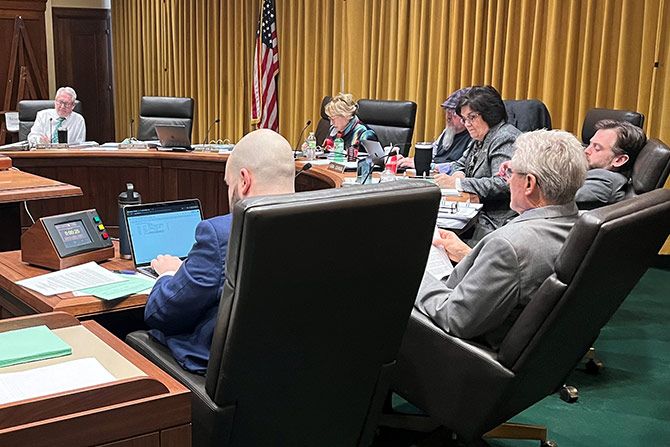Companies have a limited life. They are created, they prevail for some period of time, and then they decline and fail. Sometimes this is over a very short timeframe. Sometimes it is over an extended timeframe. Some merge with another. Some find new life in a new or revised business model. Many factors drive this.
A state’s policy towards business climate is critical to providing the environment to nourish or replenish the limited life of companies. The state’s business climate is key to being in a position to reload when companies fail (and jobs and opportunities are lost).
A state’s incentive programs are one of the 22 main business climate features that create the opportunity to be a great place for companies to locate and grow. Most states know this and have created a variety of incentive programs to spur growth and attract and retain cutting-edge businesses.
The Council for Community and Economic Research has identified 2,412 state business incentives programs enacted by states throughout the United States. Of these 2,412 programs, 37 are located in Nebraska.
To be successful, every state needs to design its business climate to not just attract jobs. Today, more than in the past, states are designing their overall entertainment, retail, and quality of life climate to help address the workforce shortages that are occurring around the country.
In 2023, the Nebraska Legislature took a next step in this direction with the passage of the Good Life Transformational Projects Act (the Act). This Act is intended to provide support for unique Nebraska projects that will attract new industries and employment opportunities and further grow and strengthen Nebraska’s retail, entertainment, and tourism industries, as well as help to develop new, great places to work and live. The Act will do this by encouraging transformational development projects within the state that create and grow companies, destinations, infrastructure, and other attractions to help keep Nebraska residents here and attract others to come.
We are beginning to see a few significant projects throughout the state begin to take shape using the new incentive. For example, public reports highlight a $500 million development project being discussed in Grand Island that would feature more than 2,000 housing units and a tournament-style sports complex. The city of Bellevue has publicly stated that it intends to use the Act to build a 100,000-square-foot indoor water park as part of an entertainment district. In addition, a developer has applied for a project under the Act near Gretna to build a project with estimated building costs of $3.2 billion that would also create nearly 30,000 jobs.
Given this activity, and the importance of the Act, we wanted to summarize the Act’s key features and how a developer can utilize the Act’s incentives to support the development of a project under the Act.
Basics of the Act
If a project is approved, the state will reduce the state’s sales and use tax rate at the project location from 5.5% to 2.75% for transactions occurring within the Project District for a 25-year period.
Eligibility begins with a very detailed application to the Nebraska Department of Economic Development. To qualify for an eligible project under the Good Life Transformational Projects Act, an applicant must propose a Project District for which the Act will apply and demonstrate the following:
- The project will have total development costs of more than $1 billion for a project in Omaha, more than $750 million for a project in Lincoln, more than $500 million for a project in a county of over 100,000 people, or more than $100 million in a county of less than 100,000 people.
- The project will, directly or indirectly, result in the creation of 1,000 new jobs for a project in Omaha, 500 new jobs for a project in Lincoln, 250 new jobs for a project in a county of more than 100,000 people, or 50 new jobs in a county of less than 100,000 people.
- If the project is located in a county of more than 100,000 people, at least 20% of sales at the project will be made to persons residing outside Nebraska or the project will generate a minimum of 600,000 visitors per year who reside outside the state. In addition, the project must attract new-to-market retail to the state and generate a minimum of 3 million visitors per year.
- If the project is located in a county of less than 100,000 people, at least 20% of sales at the project will be made to persons residing outside Nebraska.
- Any anticipated diversion of state sales tax revenue will be offset or exceeded by sales tax paid on anticipated development costs, including construction to real property, during the same 25-year period comprising the term of the District.
How Can a Developer Utilize the Act?
As currently structured, the Act simply reduces the state’s sales and use tax on transactions occurring within the Project District. That leaves it up to the developer to determine how best to use that incentive.
We believe there are four most likely options that a developer could use. First, a developer might just promote the Project District due to the lower sales tax.
Second, if a developer can finance the project through private financing, the developer could simply charge a sales fee on retail transactions occurring within the Project District essentially equal to the lowered sales tax rate. In that way, customers will pay the same total price on a taxable transaction than they would pay elsewhere in the state. The developer could use the extra funds from that fee to help pay the project costs.
Third, a developer could work with the locality to impose an occupation tax on transactions occurring within the district that would again make up for that lowered sales tax rate. The locality would then facilitate the issuance of bonds, used for project financing, that would be paid for using such tax revenue. Nebraska’s existing Community Development Law may facilitate such an option through the use of an Enhanced Employment Area.
Fourth, the 2024 Nebraska Legislature is currently considering the adoption of LB 1374. This bill would allow localities to impose either an additional sales and use tax, or an occupation tax, on transactions occurring within the District. Such taxes would need to be approved by voters. If the taxes were approved by voters, a locality could adopt a Good Life District Economic Development Program that would allow the locality to issue bonds, to be paid off by the additional tax revenue, that would be used for project financing.
Since a Project District can include areas not owned by the applicant, other property owners in the District also need to understand the business and legal implications of a Good Life District on them.
Conclusion
Based on the interest so far, it is beginning to look like the Act could encourage significant economic activity in the state—activity that appears unlikely to have happened without the Act. The Act is scheduled to close to new applications after 2024, so we continue to expect more potential projects under the Act could be proposed this year.
The Act may also become a new illustration that the right tax incentive, which is significant enough to drive decisions, is a powerful tool that can help a state and its citizens grow and prosper.


Nick Niemann and Matt Ottemann are partners with McGrath North Law Firm. As state and local tax and incentives attorneys, they collaborate with CPAs to help clients and companies evaluate, defend, and resolve tax matters and obtain various business expansion incentives. See their websites at www.NebraskaStateTax.com and www.NebraskaIncentives.com for more information. For a copy of their publications, The Anatomy of Resolving State Tax Matters or the Nebraska Business Expansion Decision Guide, visit their websites or contact them at (402) 341-3070 or at nniemann@mcgrathnorth.com or mottemann@mcgrathnorth.com.
Nebraska’s 37 Business Incentive Programs
(as identified by the Council for Community and Economic Research)
- Beginning Farmer Tax Credit Act
- Beginning Farmer/Rancher Loan Program
- Business Retention & Expansion Program
- Capital Gains and Extraordinary Dividend Exclusion
- Community Development Assistance Act (CDAA)
- Community Impact Grant Program
- Customized Job Training Program
- Developing Youth Talent Initiative
- Dollar and Energy Saving Loans
- Economic Opportunity Program
- Enterprise Zones
- Express Loans
- ImagiNE Nebraska
- InternNE Grant Program
- Invest Nebraska Loans
- Local Option Municipal Economic Development (LB840)
- Manufacturing Machinery and Equipment Sales Tax Exemption
- Nebraska Academic Research and Development Grant Program
- Nebraska Advantage Microenterprise Tax Credit Act
- Nebraska Advantage Research and Development Credit
- Nebraska Advantage Rural Development Act
- Nebraska Development Financing (Industrial Development)
- Nebraska Historic Tax Credit
- Nebraska Innovation Fund Prototype Grants
- Nebraska Seed Fund
- Nebraska Tourism Marketing Grant Program
- New Markets Job Growth Investment Tax Credit
- Recovery Loans
- Renewable Chemical Production Tax Credit
- Rural Workforce Housing Fund
- Site and Building Development Fund
- Small Business Innovation Research/Small Business Tech Transfer (SBIR/STTR) Grant
- Small Business Loans
- State Trade Expansion Program
- Tax Increment Financing
- Venture Debt Fund
- Worker Training Grants











